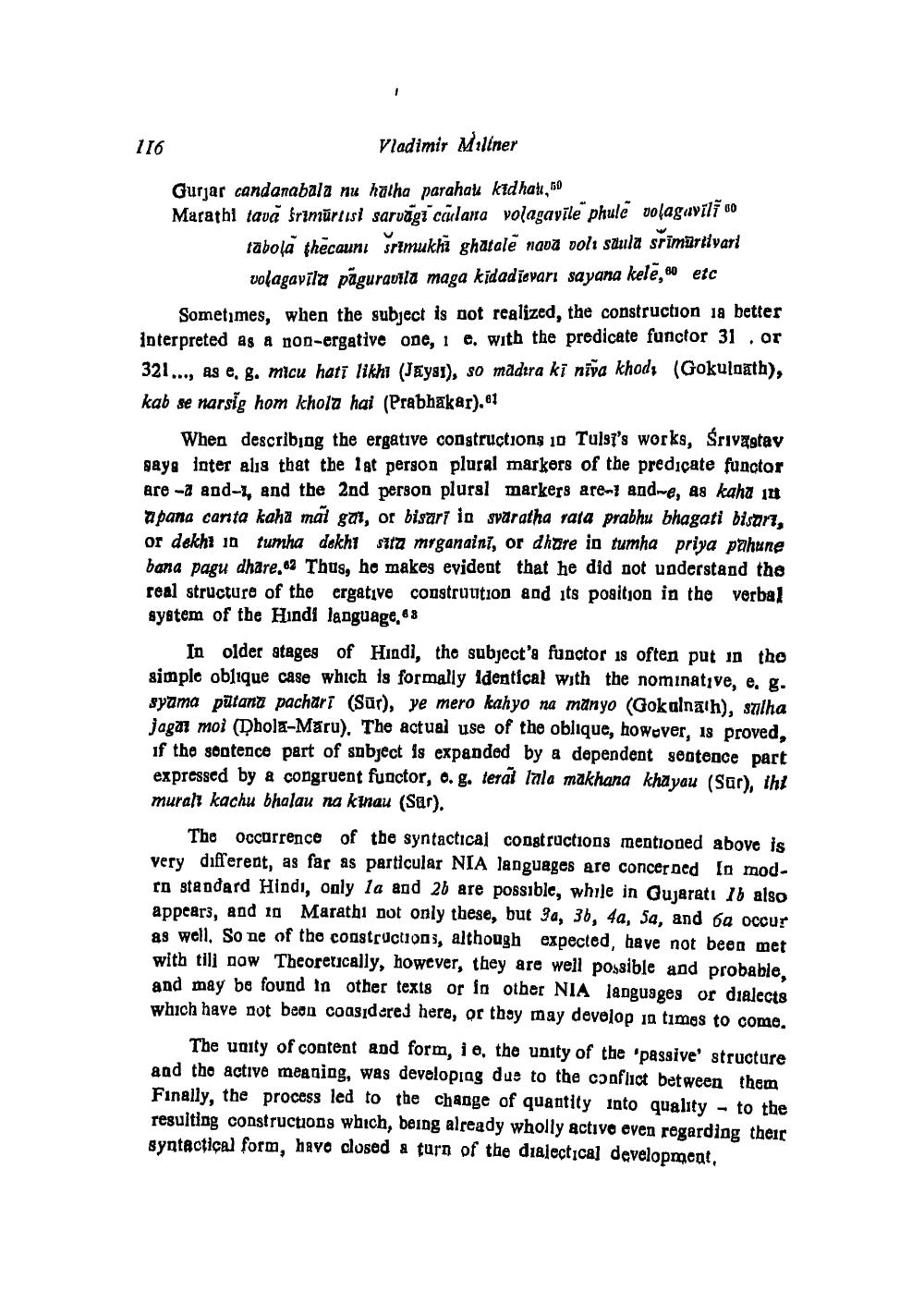________________
116
Vladimir Maliner Gurjar candanabala nu holha parahat kid hał,60 Marathi tava srimurtisi sarvági calana volagavile phule volagavili co
tabola thécauni srimukhi ghatalē navā voli szula srimārtiyari
volagavilu pāguravila maga kidadievari sayana kele, etc Sometimes, when the subject is not realized, the construction is better interpreted as a non-ergative one, i e, with the predicate functor 31. or 321..., as e. g. micu hati likhi (Jay81), so madıra ki niva khod: (Gokuloath), kab se narsig hom khola hai (Prabhakar), 61
When describing the ergative constructions 10 Tulsi's works, Srivastav saya inter alis that the 1st person plural markers of the predicate functor are - and-, and the 2nd person plural markers are- and-e, as kaha in upana carta kaha mai gai, or bisari in svaratha rata prabhu bhagati bisuri, or dekhi in tumha dekhi sita mrganaini, or dhure in tumha priya pahune bana pagu dhare, 62 Thus, ho makes evident that he did not understand the real structure of the ergative construution and its position in the verbal system of the Hindi language, 68
In older stages of Hindi, the subject's functor is often put in the simple oblique case which is formally identical with the nominative, e, g. syama putand pachari (Sur), ye mero kahyo na manyo (Gokalnath), szilha jaga moi (Dhola-Măru). The actual use of the oblique, however, 18 proved, if the sootence part of snbject is expanded by a dependent sentence part expressed by a congruent functor, o. g. terat lala makhana khayau (Sar), thl murah kachu bhalau na kinau (Sur).
The Occurrence of the syntactical constructions mentioned above is very different, as far as particular NIA languages are concerned [n mod. rn standard Hindi, only la and 2b are possible, while in Gujarati lb also appears, and 10 Marathi not only these, but 34, 36, 4a, 5a, and 69 occur as well. So ne of the constructions, although expected, have not been met with till now Theoretically, however, they are well possible and probable, and may be found in other texts or in other NIA languages or dialects which have not been coasidered here, or they may develop in times to come.
The unity of content and form, ie, the unity of the 'passive structure and the active meaning, was developiag due to the conflict between them Finally, the process led to the change of quantity into quality - to the resulting constructions which, being already wholly active even regarding their gyntactical form, havo closed a turn of the dialectical development,




